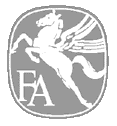
Fairchild 22 Description |
| Home > Williams Aircraft Collection > Fairchild 22 > Description | |
|
The Fairchild 22 is a two place tandem seating sportplane. The design is somewhat unusual in that it has a parasol wing, which means a wing suspended above the fuselage entirely with struts and flying wires. There is no direct attachment of wing spars to the fuselage. I purchased this example, N9484, in the spring of 1999. It had been in storage for about 9 years, and flown only infrequently before that. The aircraft was marginally ferryable, but I intend to perform a full restoration on the aircraft before flying it. My aircraft is a model C7F with the Warner 145 hp Super Scarab engine. The radial makes the fuselage appear fairly beefy in comparison to the inline engine powered models of the 22.
Although the registration says that N9484 is a model C7F, it originally left the factory as a model C7E of 125hp. Sometime during its life it was upgraded to C7F status with the larger 145hp engine. The Warner engine was quite popular amongst small aircraft builders in the 30's, but the design was obsolete by the time of WWII. For example, the rocker boxes are not pressure lubricated and the operator must repack the rocker boxes with grease every two hours of operation. The SS50A was not used on any popular military liaison aircraft during WWII, and production was terminated by wartime restrictions, so there are no war-surplus supplies available and parts are hard to come by in this day and age. The engine overall is reputed to be of average reliability for the time, which means a life of only a few hundred hours between overhauls. There are very few folks left in the country who work on 145hp Warners, mostly because parts are so hard to find and there are so few engines around. Many of the fellows who worked on these engines traditionally are literally dying off. Fortunately it is a simple engine and documentation is readily available. Before too long I will probably have to make my own parts for standard replacement items like rings, valves, and valve guides. The radial versions of the Fairchild 22 had extensive fairings applied to the roots of all the struts to reduce drag. My plane still has the fairings and original wheel pants present. There's a door on the right side of the fuselage behind the engine that opens onto a small storage compartment for the ever-present grease gun and oily rags that go along with this airplane.
Notice the wide gear stance. The wheels are typically for the time with cable operated drum brakes. The tailwheel is probably not original, since many 22's left the factory with only a tail skid. This particular tailwheel is full swivel. Also note the full span ailerons. This style was used on all 22's up until the last model C7G. Having the ailerons full span simplifies the control rigging, because the aileron pushrod tube protrudes from the fuselage between the cockpits and directly connects to the aileron. There are no cables or pushrods within the wing itself. The wing is two piece and is supported by a variety of struts and two main flying wires attached to the fuselage structure. The stabilizer incidence is adjustable to provide for trim. All controls ride in ball bearings and have a very nice feel.
The rear cockpit is entered by using the inset step on the fuselage, and handles on the wing trailing edge. The front cockpit has a door.
Rear cockpit instrumentation. This panel appears to have been modified to "Civilian Pilot Training" standards during WWII because it contains instruments that were not included in the stock Fairchild 22. My plane has a funny habit of returning to the Seattle area. The ownership records show it being used in the thirties by a operator at Boeing Field. It went migrated to Ohio and went through a succession of owners before being brought to San Francisco in the mid-60s where the engine was modified to be an SS50A with splined propeller shaft, vs. the original taper-shaft model. Eventually the plane wound up being owned by the Gronquist family, who based the airplane out of Crest Airpark in Kent through the seventies and eighties. The Gronquists performed at least one partial restoration of the aircraft. They moved the aircraft to California, which is where the plane was in storage when I purchased it. I trucked the aircraft back to Renton where the airplane is now undergoing restoration. |
||